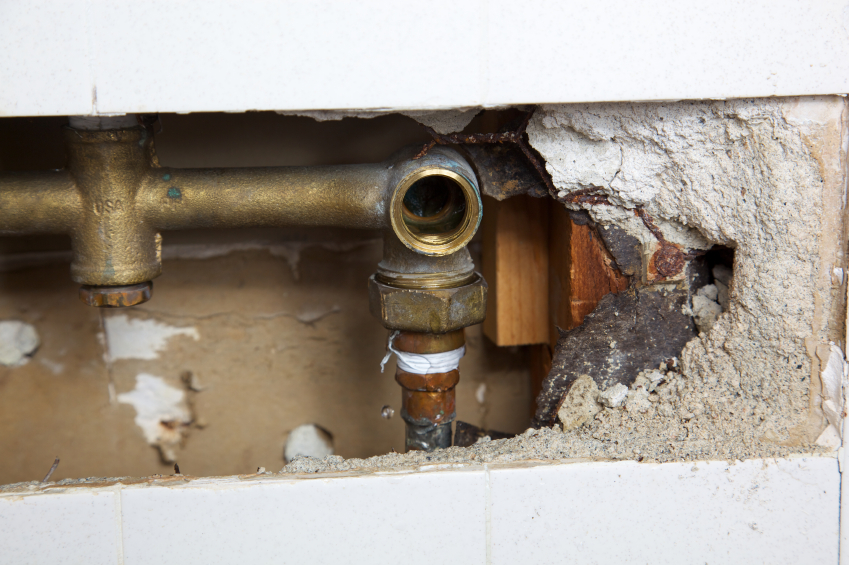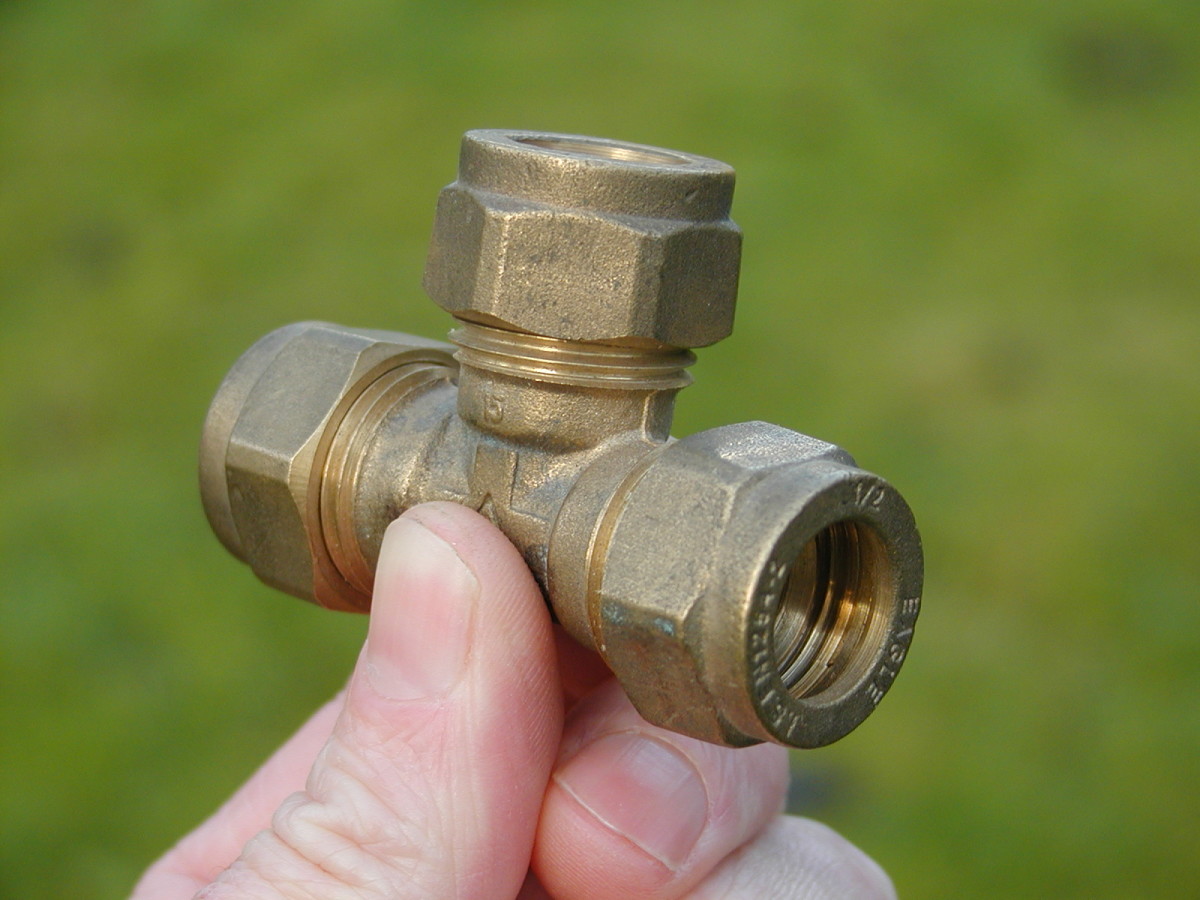Identifying As Well As Repairing Plumbing Noises In Your House
Book Your ServiceThey are making a number of great pointers relating to Diagnose Unwanted Plumbing Noises in general in this great article just below.

To identify noisy plumbing, it is very important to identify first whether the unwanted sounds occur on the system's inlet side-in various other words, when water is transformed on-or on the drainpipe side. Sounds on the inlet side have actually differed reasons: extreme water stress, worn valve and faucet parts, poorly attached pumps or various other devices, improperly put pipeline bolts, as well as plumbing runs consisting of a lot of tight bends or other restrictions. Sounds on the drainpipe side normally come from poor location or, similar to some inlet side noise, a layout containing limited bends.
Hissing
Hissing sound that happens when a faucet is opened a little usually signals extreme water pressure. Consult your local public utility if you presume this trouble; it will certainly be able to tell you the water stress in your location as well as can install a pressurereducing shutoff on the inbound supply of water pipe if essential.
Various Other Inlet Side Noises
Creaking, squealing, scratching, snapping, and also tapping usually are brought on by the growth or contraction of pipelines, normally copper ones supplying warm water. The noises happen as the pipes slide versus loosened fasteners or strike neighboring home framing. You can usually pinpoint the area of the issue if the pipes are revealed; simply comply with the sound when the pipelines are making noise. More than likely you will discover a loosened pipe wall mount or an area where pipelines lie so near floor joists or other mounting pieces that they clatter against them. Affixing foam pipe insulation around the pipes at the point of call ought to remedy the trouble. Make sure straps and hangers are secure and also offer adequate assistance. Where possible, pipeline fasteners should be affixed to huge architectural aspects such as structure walls as opposed to to mounting; doing so reduces the transmission of resonances from plumbing to surfaces that can amplify as well as move them. If connecting bolts to framing is unavoidable, wrap pipelines with insulation or other durable material where they call fasteners, as well as sandwich the ends of brand-new fasteners in between rubber washing machines when installing them.
Dealing with plumbing runs that deal with flow-restricting tight or countless bends is a last option that must be undertaken just after consulting a proficient plumbing service provider. Sadly, this scenario is fairly typical in older residences that might not have been built with indoor plumbing or that have actually seen numerous remodels, especially by novices.
Babbling or Shrilling
Extreme chattering or screeching that happens when a shutoff or tap is activated, and that typically vanishes when the installation is opened totally, signals loosened or defective internal parts. The option is to change the shutoff or tap with a new one.
Pumps as well as home appliances such as cleaning equipments and also dishwashers can transfer motor noise to pipes if they are incorrectly linked. Connect such products to plumbing with plastic or rubber hoses-never rigid pipe-to isolate them.
Drainpipe Noise
On the drain side of plumbing, the chief goals are to get rid of surfaces that can be struck by falling or rushing water as well as to protect pipelines to consist of unavoidable noises.
In brand-new building and construction, tubs, shower stalls, bathrooms, as well as wallmounted sinks as well as containers must be set on or against durable underlayments to decrease the transmission of noise with them. Water-saving commodes and also taps are much less loud than traditional designs; install them rather than older types even if codes in your area still permit using older components.
Drains that do not run vertically to the cellar or that branch into straight pipeline runs supported at flooring joists or other framing existing particularly frustrating noise troubles. Such pipelines are huge sufficient to radiate considerable resonance; they likewise carry significant quantities of water, which makes the situation even worse. In new construction, define cast-iron dirt pipelines (the large pipelines that drain pipes toilets) if you can manage them. Their enormity includes a lot of the noise made by water passing through them. Additionally, prevent routing drains in wall surfaces shown bedrooms and also spaces where individuals gather. Walls consisting of drainpipes need to be soundproofed as was explained earlier, utilizing double panels of sound-insulating fiberboard and also wallboard. Pipes themselves can be covered with special fiberglass insulation created the function; such pipes have an invulnerable vinyl skin (often containing lead). Outcomes are not always adequate.
Thudding
Thudding noise, typically accompanied by shuddering pipes, when a tap or appliance shutoff is turned off is a problem called water hammer. The sound as well as resonance are caused by the resounding wave of pressure in the water, which all of a sudden has no location to go. Often opening a shutoff that discharges water promptly into an area of piping including a restriction, elbow joint, or tee installation can create the very same problem.
Water hammer can normally be cured by setting up installations called air chambers or shock absorbers in the plumbing to which the issue shutoffs or faucets are attached. These devices permit the shock wave created by the halted circulation of water to dissipate in the air they consist of, which (unlike water) is compressible.
Older plumbing systems may have brief upright sections of capped pipeline behind walls on tap competes the exact same objective; these can eventually loaded with water, reducing or ruining their performance. The remedy is to drain the water supply completely by turning off the major supply of water shutoff and also opening all taps. After that open the primary supply shutoff and close the faucets one by one, beginning with the tap nearest the shutoff and ending with the one farthest away.
Most Common Causes of Noisy Water Pipes
When you’re at home, you expect the pipes in your plumbing system to bring hot and cold water to all parts of your house at your beck and call. Whether you’re baking in the kitchen, relaxing in a hot bath, doing laundry in the washing machine, or simply need to flush the toilet, water supply and delivery is pivotal to daily life.
Unfortunately, these pipes aren’t perfect, and you may notice that some of them start to make noises over time. These seemingly random plumbing sounds might even scare you a little (you’re not alone!).
To make matters worse, loud noises coming from your piping can actually be an indicator of a bad plumbing problem or series of plumbing problems in your pipes. If left untreated, these clogging and drainage issues can become disastrous over time.
To get to the root of these noisy water pipes, let’s take a look at the common causes. While many causes exist, there are a few that crop up again and again in noisy pipes and plumbing systems that are worth being aware of.
So, without further ado, follow along below to find out once and for all what’s making that awful noise in your water pipes and what you can do right now to fix it.
Why Are My Water Pipes Shaking and Rattling?
While most piping lives behind the walls, floors, or ceilings of your home, some have to be hung with fasteners. If one of these slips, gets loose, or comes off completely, then the pipe can start moving or swaying as water runs through it.
Copper pipes in particular often expand as warm water travels across their metal surface, especially if the temperature on the hot water heater is too high.
Copper pipes carrying hot water can enlarge, but when they ultimately reduce in size again, this makes them scrape against a house’s joists, studs, or support brackets in the walls, resulting in loud noises.
If this happens, you’ll probably hear something that sounds like shaking or rattling going on in your walls. This is just the result of a slightly loose pipe, so it can be fixed rather easily, but it should be attended to quickly so the problem doesn’t get worse.
When you hear shaking and rattling in the ceiling or under the floorboards, don’t hesitate to call a trusted plumbing professional to take care of that noise before it gets unbearable.
Why Does My Plumbing Make a Humming Noise?
If the water pressure in your home gets too high for your house’s plumbing system capacity, your pipes can literally start to vibrate, much like a car traveling very fast down an open highway. If the water is running, you might start to hear a hum coming from your pipes.
While this might happen in a home of any type or size, if your home draws on well water, you’re at a higher risk for vibrating pipes. If this happens, do a quick check on your water tank, as you’ll usually want it set at no more than 55 PSI (pound-force per square inch).
In the event that you don’t have direct access to reading a water pressure meter on your tank, call a professional plumber to come and take a look. They can alter the system appropriately to get rid of that pesky hum.
Where Does That High-Pitched Whining Noise Come From?
Every house has a complete piping system of valves and other elements that depends on lots of tiny pieces and parts to enable the whole thing to work as it’s supposed to. Like any other piece of hardware, washers, nuts, and bolts (and much else) can become loose or wear out over time, resulting in a high-pitched whining noise.
This whistling sort of sound is most typically the simple product of a worn down piece of hardware near a dishwasher, washing machine, or dryer.
These specific areas are more susceptible to loose washers or other hardware because those appliances cause a significant amount of movement and can ultimately wear down nuts and bolts in that particular part of the piping.
If this happens to occur in your home, just have a plumber come in to tighten or replace the necessary hardware, and that should fix it up in no time.
How to Fix Loud Noises in Water Pipes
There are lots of causes for noisy water pipes, but the above list covers most of the common culprits. If you experience any of these sounds in your home, the best way to fix the issue quickly and painlessly is to get in touch with a trusted plumber or plumbing company.
At Kay Plumbing, we have years of experience helping families and homeowners get back to life after a difficult or pesky plumbing problem. If you live in Richland or Lexington County, look no further for a local plumbing team to get your pipes back on track.
If you need your drains cleaned or unclogged, we can have a trained, licensed, and insured plumber at your door, often in just a few hours.
Get in touch with us today so that you can stop living with unnecessary nuisance noises coming at all hours of the day and night. Let the good people at Kay Plumbing get you back to life as usual.
https://kayplumbing.com/plumbing-blog/most-common-causes-of-noisy-water-pipes/

Do you really like more info about Why Your Water Pipes Are Noisy and How To Shut Them Up? Place feedback further down. We'd be interested to know your ideas about this blog entry. We hope that you come back again in the future. Are you aware of someone else who is in the market for Why Your Water Pipes Are Noisy and How To Shut Them Up? Please feel free to promote it. I praise you for your time. Visit again soon.
Explore